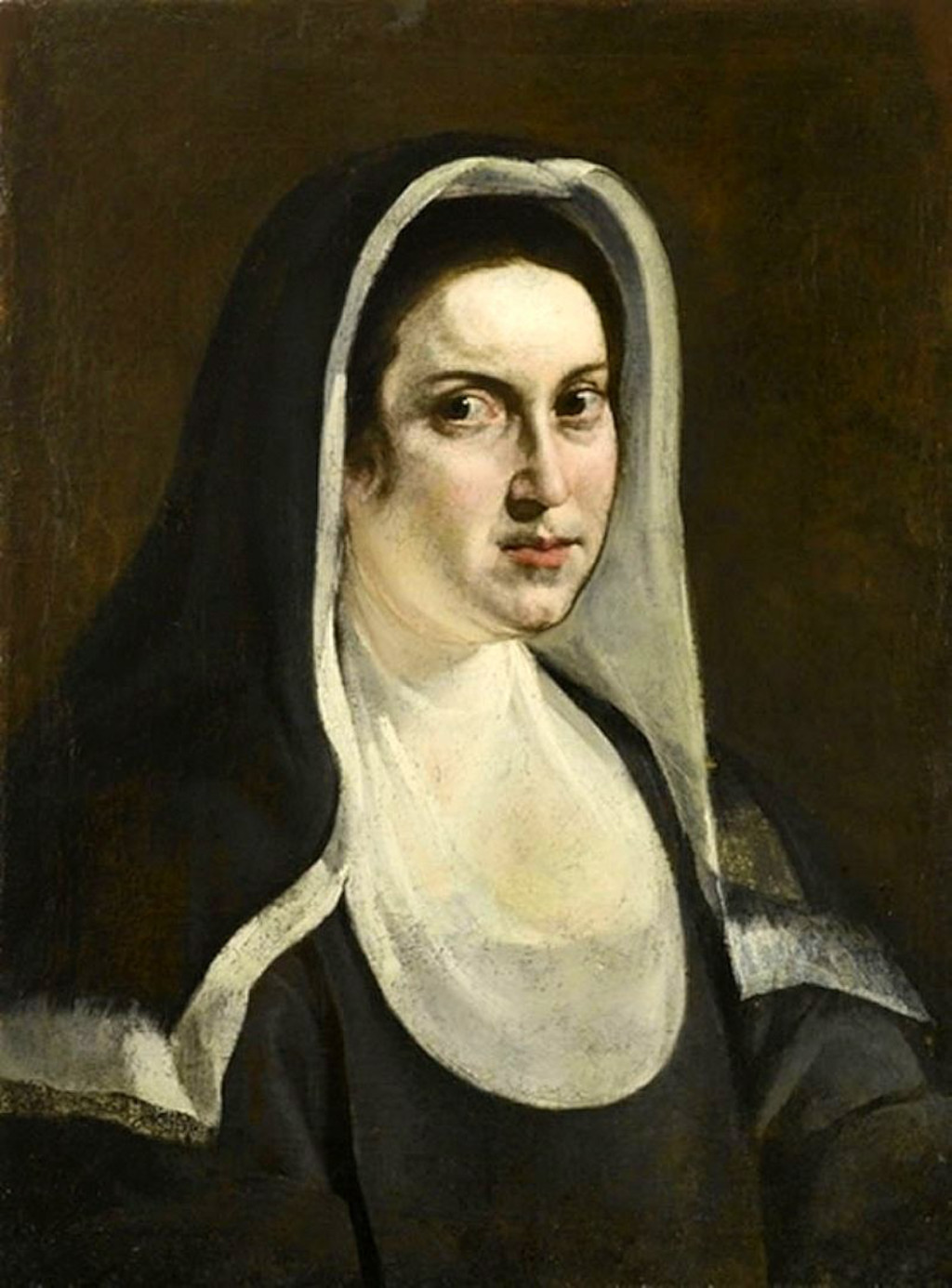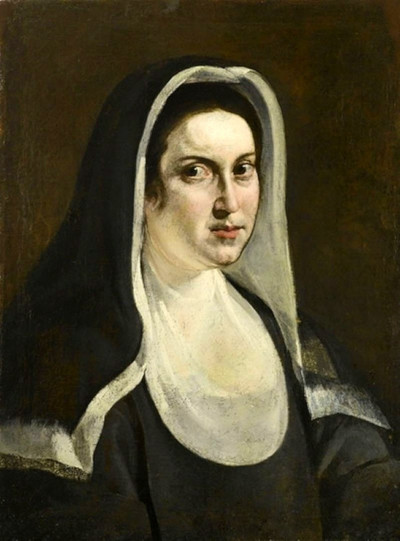Portrait of a nun, known locally as Ritratto di una monaca, was completed by Artemisia Gentileschi in around 1618, which was fairly early on in her career.
This relatively small portrait measures 70 cm in height, by 52.5 cm in width. Relatively little else is known about the piece, but it is most likely to reside within a private collection, probably somewhere in Italy.
Artemisia Gentileschi was most famous within her own lifetime for her female portraits, even though she also covered men within her oeuvre. Typically, she would re-imagine the way in which art could depict leading female characters from the past, and would normally depict them as strong, confidence women in control.
Description
The artist chooses a subdued palette for this portrait, using mainly just tones of white and black in order to deliver this portrait of a nun. Clearly this is partly due to the colouring of her traditional religious clothing, but the artist rejects any opportunity to add colour elsewhere in the painting.
The nun looks directly at us with a strong, almost piercing gaze. Her headwear nestles comfortably on her head, just revealing a small display of her hair around the top and sides of her head. She sports a long nose, with noticeable bags around her eyes which suggests at her age.
One might take from this that the nun had a fairly serious character, but equally she might simply instead have been slightly uncomfortable in this scenario of posing for an artist. Typically, her role would have instead encouraged her to avoid vanity or self reflection, and instead focus on helping others and setting a selfless example.
The nun's facial features could actually be seen again in other paintings, with classical shapes to her nose, eyes, and lips. It might even have been possible that the model for this painting was not actually a model at all, and was simply posing in the appropriate clothing.
With little information available on Artemisia's Portrait of a Nun, it seems unlikely that we will ever learn the identity of the sitter. Much of her career remains a mystery, due to a lack of research, but today this situation has changed considerably, thanks to a re-appraisal of many of the most famous female artists from the past - Artemisia is right at the top of that list.
Career Summary
Artemisia Gentileschi took over from her father, who himself was a highly successful artist. She would take on most of her technical knowledge from him initially and her approach bore similiarities with the great Caravaggio, though with some noticeable variations too.
Across her career she took in religious themes several times over, as shown here, but also drew on other sources of inspiration such as Greek and Roman mythology. She particularly was drawn to strong female figures, and produced multiple portraits of many of them. Some of her most famous paintings include the likes of Judith Slaying Holofernes (Florence), Susanna and the Elders, Self-Portrait as the Allegory of Painting, with the latter indicating her love for self portraits as well.
Large Image
We have included a larger image of the original painting below. For many, this may be a painting that they were entirely unaware of, and there have been a number of new additions to the artist's oeuvre in recent years, thanks to new discoveries as well as re-appraisals of existing works which had previously been assigned to others.
 Portrait of a Nun
Portrait of a Nun




